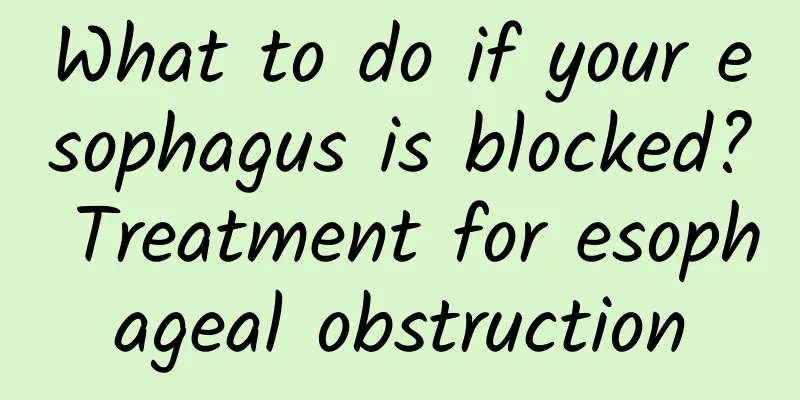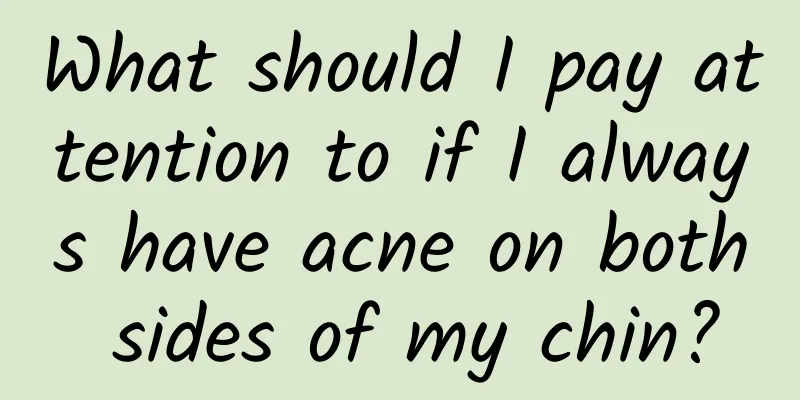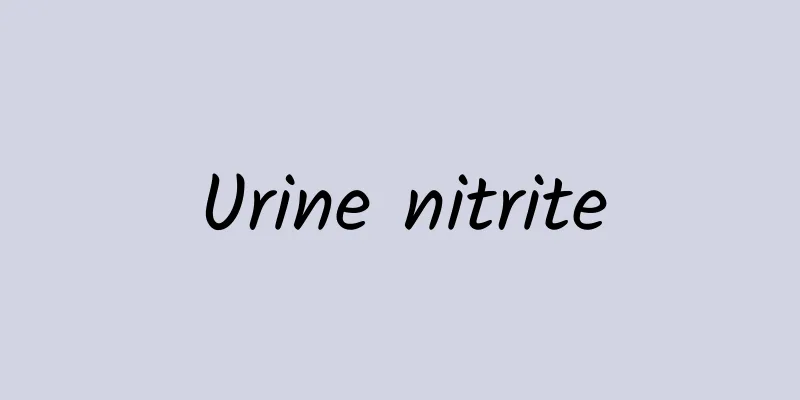What to do if your esophagus is blocked? Treatment for esophageal obstruction

|
If esophageal obstruction occurs, esophagoscopy should be performed promptly to confirm the condition. Esophagoscopy is suitable for patients with dysphagia or esophageal obstruction. A full-body examination should be performed during this examination. Patients with hypertension or heart disease should not undergo this examination. 1. Indications (1) Patients with dysphagia or esophageal obstruction. (2) Patients suspected of esophageal cancer by X-ray barium meal examination. (3) Patients with local external pressure on the esophagus found during X-ray barium meal examination. (4) For patients who have undergone radiotherapy or surgical resection for esophageal cancer and are suspected of having a recurrence, microscopic examination can be used to confirm the diagnosis. 2. Contraindications (1) Those with severe hypertension, heart disease, or cardiopulmonary insufficiency. (2) Aortic aneurysm compresses the esophagus. (3) If the lesion at the entrance of the esophagus has caused obstruction and the endoscope cannot pass through, making observation difficult, consider using a rigid esophagoscopy. (4) Use with caution in patients with esophageal perforation caused by sharp foreign bodies or malignant lesions, as fiberoptic microscopy requires inflation with water, which can easily aggravate mediastinal infection. 3. Anesthesia and body position (1) Anesthesia: Mainly local anesthesia, use 2-3 ml of 1% tetracaine, spray on the pharyngeal mucosa, and ask the patient to hold the liquid in his mouth and not spit it out. Spray again after an interval of about 3 minutes. The anesthetic effect can be achieved after 3 to 5 times. Finally, swallow the medicine. (2) Body position: After anesthesia, the patient lies on his left side with his legs naturally bent and his whole body relaxed. 4. Surgical steps (1) The surgeon should first check whether the fiberscope light source, suction, air blowing, water injection and adjustment knobs are functioning normally. Then stand at the patient's head end, facing the patient, and ask the patient to gently bite the dental pad with the hole. The operator holds the operating part of the mirror with his left hand; with his right hand, bend the lens into an arc shape and send it into the mouth through the hole of the dental pad. (2) Adjust the lower knob to straighten the lens, and gently push it downward along the posterior pharyngeal wall, observing as you advance. When you reach the esophageal opening in the hypopharynx, slightly apply pressure to the lens. When the esophageal opening opens or the patient swallows, the lens can smoothly enter the esophageal cavity. (3) After entering the esophagus, an appropriate amount of gas is intermittently injected to expand the esophagus to ensure that the camera can be moved forward and the lesion can be observed under direct vision. (4) First, send the camera to the cardia, then carefully observe each segment of the esophagus while withdrawing the camera. After the lesion is found, its length and distance from the incisor are measured, and then a biopsy is taken depending on the specific situation. Observe that there is no active bleeding and withdraw the fiberscope while suctioning. |
>>: Why does sex hurt after childbirth? These are the reasons causing the trouble.
Recommend
I can't bend down. It hurts when I bend down.
The waist is a very important part of the human b...
What is spontaneous pneumothorax? What are the symptoms?
Spontaneous pneumothorax is the accumulation of g...
How to restore a person’s energy and spirit? Seven methods that are absolutely reliable
It seems that today's office workers have no ...
What to do if the labia majora is itchy
Diseases are some situations that people often en...
Symptoms of hyperopia
Myopia and hyperopia are the most common ophthalm...
What are the external methods of TCM for treating phlebitis?
Phlebitis is a serious disease. It is particularl...
Why did a large blood clot come out after eating rice noodles?
Mifepristone is the abbreviation of mifepristone ...
Why is the sperm a little yellow when a man ejaculates?
If a man feels that his semen is a little yellow,...
Heavy menstrual flow with blood clots after medical abortion
Medical abortion is a relatively common method of...
Treatment methods for sudden tinnitus and methods to prevent and treat tinnitus
Tinnitus is a relatively common symptom. Sometime...
What are the symptoms of tuberculous cervicitis?
Cervicitis is a common gynecological inflammation...
What is the effect of applying toothpaste on the face
Many people (especially women) will develop some ...
Pain in the upper buttocks and lower back
If you experience pain in your buttocks or lower ...
Can synovitis be completely cured?
Synovitis is a relatively common disease. It is a...
How to get rid of acne on forehead
How to get rid of acne on the forehead? Many peop...









